How do you make beatboxing, speech, and language sounds? What is happening in the mouth? TyTe explains all in this introductory article…
When you make beatboxing, speech, and language sounds with your mouth, two (or sometimes three) different parts of your mouth are interacting with each other. For example, if you say the English letter p it is your upper lip and your lower lip. Or, if you say the English letter k it is your tongue and your soft palate (the soft part of the roof of your mouth).
Beatboxology is a method of describing these interactions between two or three mouth parts using a single phonic icon that we call an iconophonic.
There are 15 parts of the mouth that are used in sound creation and each part of the mouth is represented by an icon.
Take a look at this diagram. Can you see how each icon is a simplified representation of a mouth part?

You may have noticed that there are 16 icons in the diagram! The Vocal Chords is a separate kind of sound generator so we are not including for the moment.
Here is a key describing each mouth part:















Sounds are generated and controlled by interactions between two (or sometimes three) mouth parts working together. We call these Places of Articulation.
There are FOUR ways in which two mouth parts can interact.
As an example, let’s use our Upper Lip and Lower Lip and look at the four ways in which they can interact with each other.
Here are our two lip icons.

Did you know that the technical term for two lips is BILABIAL. Bi means two and labial means lips. Cool huh?
So, how can the two lips interact? Let’s find out…
A plosive is where two mouth parts are pressed together then released with a sudden flow of air to create a sound. You can think of them as explosive sounds.
The icon for a two lip (bilabial) plosive looks like this:
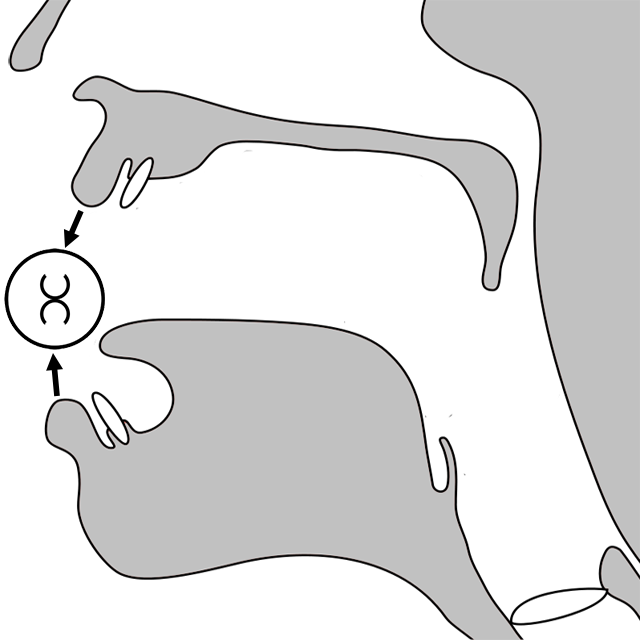
It is the sound used to make the English letter b and p and in beatboxing it is used to make kick drum sounds.
IMPORTANT: In Beatboxology you can always recognise a plosive because the two mouth parts are touching.
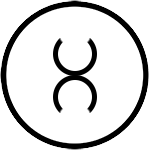
You can find more about the bilabial plosive in the Phonics section of BZZKTT.
A fricative is made by squeezing a flow of air between the two mouth parts. Think of them as continuous sounds like the English letters f, s, and h.
The icon for a two lip (bilabial) fricative looks like this:
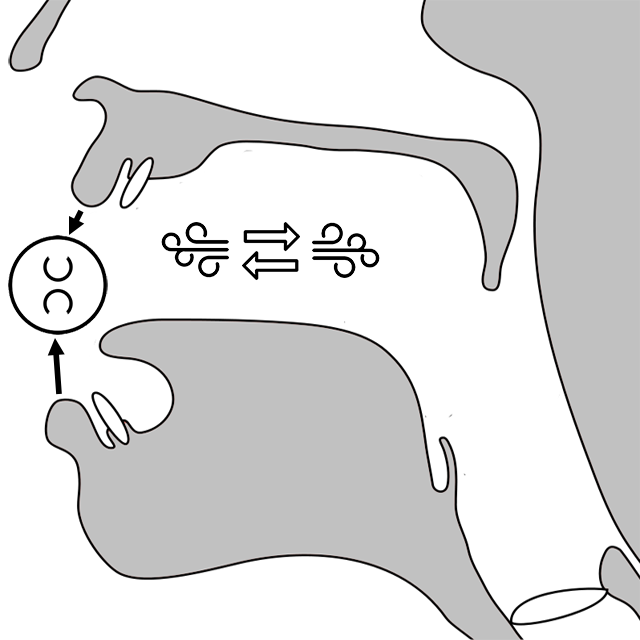
It is the method used to make an unvoiced English letter w.
IMPORTANT: In Beatboxology you can always recognise a fricative because there is a gap between the two mouth parts.
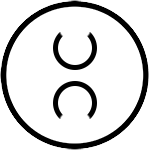
You can find more about the bilabial fricative in the Phonics section of BZZKTT.
A percussive is made by banging the two mouth parts together – like when you gnash your teeth.
The icon for a two lip (bilabial) percussive looks like this:
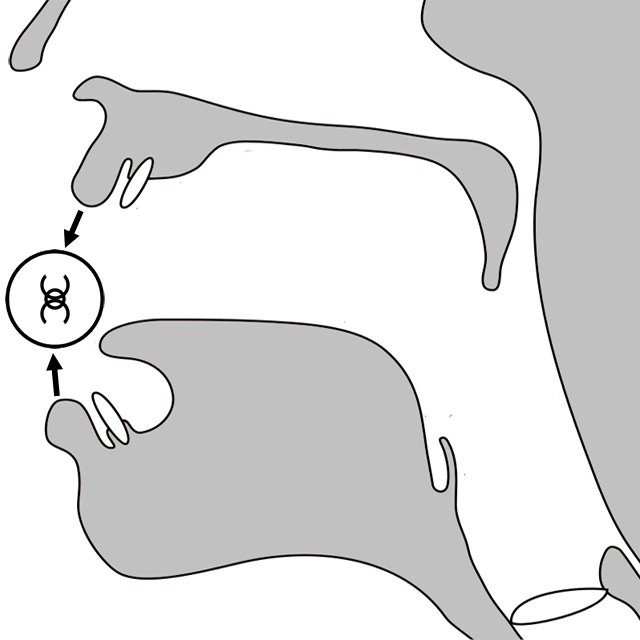
There aren’t any English letter sounds that use percussives!
IMPORTANT: In Beatboxology you can always recognise a percussive because there is a small circle overlapping the two mouth parts.

You can find more about the bilabial percussive in the Phonics section of BZZKTT.
A Stop doesn’t make a sound in itself. A stop is when the two mouth parts stay pressed together for the duration of the sound.
The icon for a two lip (bilabial) stop looks like this:

It is the sound used when making the vocalised English letter sound m.
IMPORTANT: In Beatboxology you can always recognise a stop because there is a small line connecting the two mouth parts.

So, there are FOUR ways in which two mouth parts can interract: Plosives, Fricatives, Percussives, and Stops.
The FOUR interactions have four different icons:
Plosive – mouth parts touching

Fricative – gap between the mouth parts

Percussive – small overlapping circle between the mouth parts

Stop – an interconnecting line between the mouth parts

Oh yes… there is one other way in which sounds are generated and that is using the vocal chords. We say that these sounds are voiced or vocalised.
The phonic icon (iconophonic) used for the vocal chords is this:

In Beatboxology we can show if a vocalised sound is pitched high or low by the ellipse being ‘higher’ or ‘lower’ between the two vertical lines. Like this…
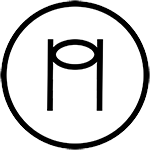
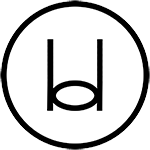
In Beatboxology, complex sounds are created by combining phonic icons (iconophonics) by displaying them in a row.
For example, a single sound may contain a plosive, fricative and also be voiced.
There are EFFECTORS too which are used to shape the sound. For example, to indicate if a sound is made inwards or whilst breathing. These will be covered in a different article!
The wonderful thing about Beatboxology is that it is a visual and language-free method that can be used to describe just about any beatboxing, speech, or language sound, even helicopters!


Heaps of Peace. TyTe.
BZZKTT Version 8.2 • © 2015-2020 Gavin ‘Beatbox’ Tyte (aka TyTe) • All Rights Reserved
BZZKTT is kindly hosted by Alex Tearse from Reefnet.
Special thanks to Alex Tearse, Paul Arnett, Michael Wyatt, Tyler Thompson, Helen Tyte, David ‘Goznet’ Gosnell, and Jerusalem Productions.